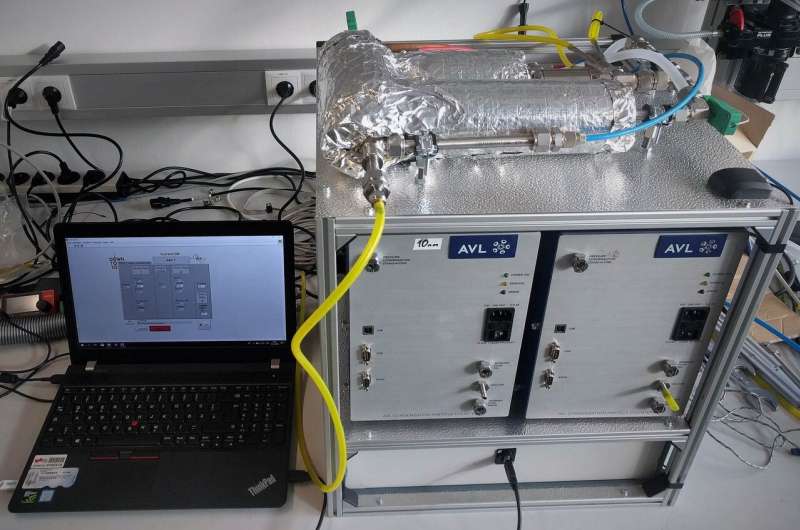New exhaust gas measurement registers ultrafine pollutant particles for the first time

A few days ago, the European Commission presented its Green Deal, which aims to make the EU climate neutral by 2050 in order to protect the environment and improve people's health and quality of life. One of the planned measures is the introduction of stricter exhaust regulations. The limit values for pollutant emissions from vehicles have already been laid down by law. The current target value is 6x1011 particles per kilometer (Euro 6d-Temp), but only particulate matter bigger than 23 nanometers (nm) is regulated. Smaller nanoparticles, such as those emitted by new and future generations of combustion engines in even greater numbers, cannot currently be detected in exhaust emission tests. However, this fine dust is even more harmful to health since particles of this size can penetrate unhindered into the lungs.
Reliable measurement of ultrafine particles
As part of the Horizon 2020 project DownToTen, researchers from TU Graz and an international consortium have now developed a new method by which particles down to a size of 10 nm can be measured for the first time. Tests on the chassis dynamometer of TU Graz's Institute of Internal Combustion Engines and Thermodynamics confirm the robustness of the process, as do tests in practical driving operation (Real Driving Emissions—RDE).
Markus Bainschab, a researcher at TU Graz's Institut für Elektrische Messtechnik und Sensorik (former Institute of Electrical Measurement and Measurement Signal Processing and Institute of Electronic Sensor Systems) who is also in charge of the development of the new measuring system explains why such small particles were not able to be measured:
"At the sub-23 nm scale, there are many liquid particles in the exhaust gas. These volatile droplets are not as dangerous to health as the solid particles. For an exact test result, we have to ensure that liquid particles are not detected by mistake during measurement. Using current measuring methods it is qualitatively not possible to remove the liquid particles without losing a large part of the solid particles. But we have succeeded in doing this through an optimized dilution system and the oxidation of hydrocarbons with the aid of a catalyst."
Better understanding of the effects of exhaust gases on air pollution
The heart of the process is a mobile emission measuring device that is attached to the vehicle exhaust pipe and measures both new and old ultrafine particles. The detection of new and old particles has two advantages, as Bainschab explains: "In combination with an aerosol mass spectrometer, the ratio of vehicle emissions to old particles can be examined and it can be determined whether these so-called secondary aerosols are produced by the pollutant emissions." These secondary aerosols do not necessarily have to be vehicle particles. Atmospherically aged particles can also originate from the sea, agriculture, forests or natural processes.
In the process, the newly produced emissions of the car are first recorded, then artificially aged in the atmosphere and analyzed. The data are then compared with those of the measured secondary aerosols from the air. The result shows the real influence of car exhaust gases on air quality.
The process provides a better understanding of the formation of secondary aerosols by car exhaust gases and can help automotive manufacturers reduce vehicle emissions by developing new combustion engines or by exhaust after-treatment. In addition, the successful research can serve as a basis for new exhaust gas legislation.
Provided by Graz University of Technology




















